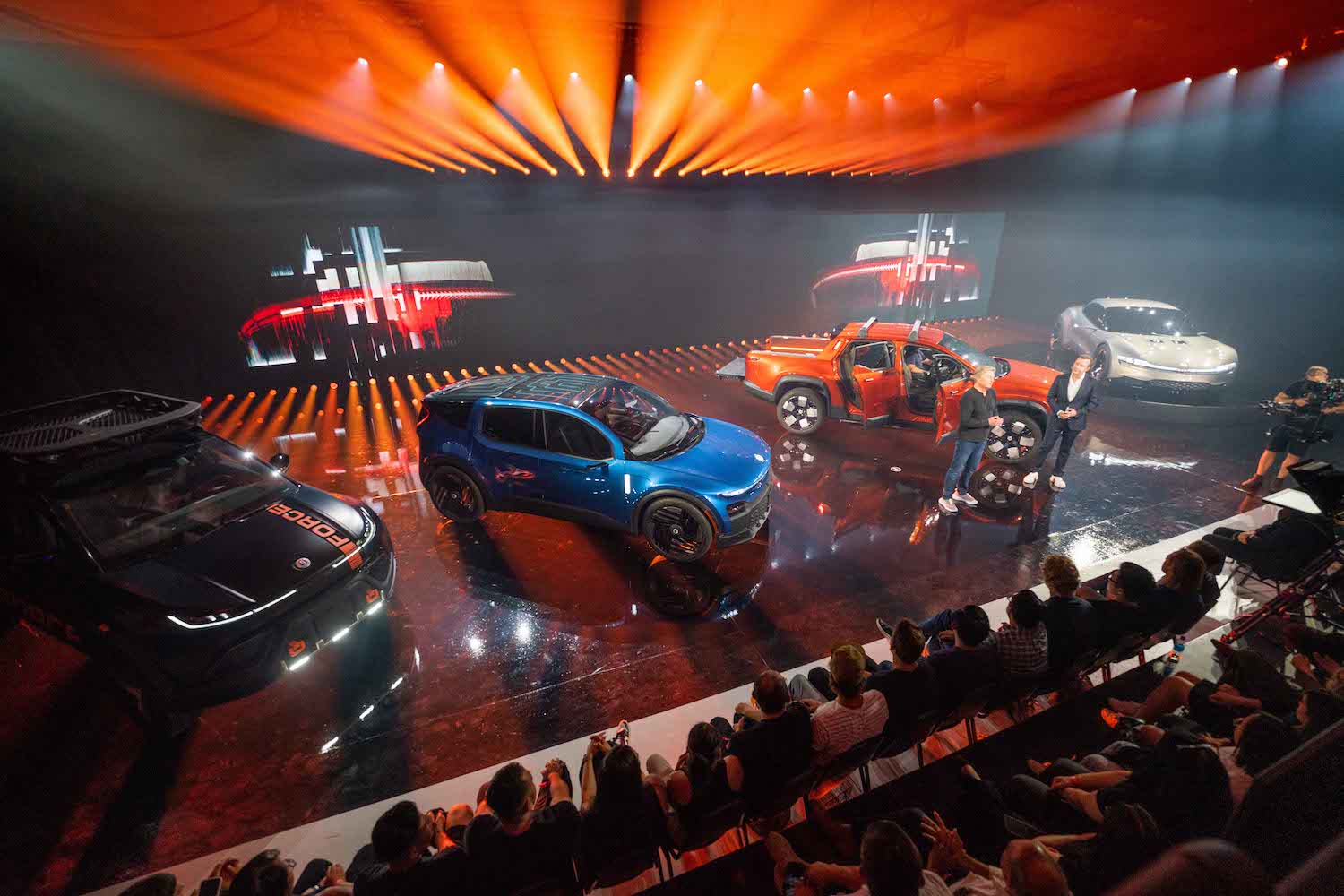Fisker, the electric car maker eponymously named for Henrik Fisker, a one-time head of design at Aston Martin, has revealed a dramatic new electric convertible with a claimed range of 1,000km.
Folding hard-top
The Fisker Ronin is a sleek 2+2 with a folding hard-top roof, very much in the mould of the last-generation Mercedes SL. Fisker claims that its triple-motor setup gives it just over 1,000hp and a 0-100km/h time of 2.0 seconds.
The battery that provides power for all of that is said to be integrated into the chassis itself, and although Fisker hasn't revealed how much energy that battery stores, it's already claiming that the Ronin will have a one-charge range of more than 1,000km.
In spite of the styling fooling you that the Ronin is a two-door car, it actually has four doors, all opening up and out in butterfly style. The folding hardtop, meanwhile, is made of carbon fibre to minimise its weight. The Ronin will also get a fully-active aerodynamic package.
Fisker is already inviting deposits of between USD $1,000 and $2,000 for the Ronin, which is expected to go into production at the back end of next year, with first deliveries in 2025.
You'd think one 1,000hp, 1,000km sports car would be enough for one company to launch in one evening at a gala event in Los Angeles. But no, Fisker has more up its sleeve.
Compact and affordable hatchback
The event also saw the first public appearance of Fisker's new PEAR hatchback, and we are capitalising the name because it's actually an acronym, standing for Personal Electric Automotive Revolution.
While the Ronin will be Fisker's high-end, high-price tech demonstrator, the PEAR will operate at the exact opposite end of the market - it's been designed to be cheap both to build and buy and the most basic versions, with a small battery and an expected range somewhere between 160km and 250km, are aimed at a price point of less than €30,000.
Fisker has developed an entirely new platform for the PEAR, dubbed the SLV-1. It's a steel platform, but Fisker claims that the company has slimmed down its complexity, reducing the parts count by as much as 35 per cent compared to other compact EV models.
More expensive versions will get a bigger battery for a range of more like 480-500km, but Henrik Fisker said at the launch event that he expects, in time and as charging networks improve, that the small battery version will become the biggest-selling model.
Although it's a compact car, the PEAR is designed to be roomy and can be fitted with a front bench seat turning it into a full six-seater. There's a 'frunk' storage area at the front (although Fisker prefers to call it a 'Froot' or front-boot, in keeping with the PEAR's name), while at the back, the boot hatch doesn't open up and out, it slides down into the rear bumper in what Fisker calls a 'Houdini Boot.'
The interior has been designed to be exceptionally minimalist, with no hinged or moving parts - no glovebox, no covered storage areas - but you do get the de rigeur large screen, which runs on Fisker's new integrated 'Blade' software. The Blade system also reduces the number of individual computer units needed to run the car's various systems, which, again, reduces costs and complexity. Fisker expects the PEAR to make production in 2025 as well.
Electric pickup truck
Not enough for you? That's OK, Fisker has more. How about the Alaska pickup truck, based on the same platform as Fisker's already on-sale Ocean SUV? Fisker claims that the Alaska is the world's lightest and most sustainable pickup and has a range of up to 550km.
The load bed measures 1.37 metres in standard form, but the bodywork of the Alaska has a neat trick - mirroring the PEARs' Houdini Boot, you can open up the rear of the crew cab and fold away the seats, extending the load bed to 2.8 metres if needed. The interior features multiple screens, and in the back, there's a holder for a cowboy hat. Yes, really.
"Fisker isn't standing still," said Henrik Fisker. "We want the world to know that we have big plans and intend to move into several different segments, redefining each with our unique blend of design, innovation, and sustainability. Innovation and sustainability, along with design, are our three brand values. By 2027, we intend to produce the world's first climate-neutral vehicle, and as our customers reinvent their relationships with mobility, we want to be a leader in software-defined transportation."

